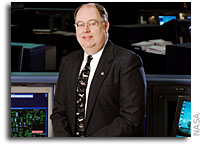Wayne Hale’s NASA Blog: Myth, Power, and Value

As soon as I read this excerpt, I knew I had to read the whole book:
“Coronado’s journey was the Apollo expedition of his day and Mexico City was a sixteenth-century mission control, shipping men out to explore the unknown.”
Tony Horwitz has written a lively, easy to understand, yet profound history of the exploration of North America from Columbus in 1492 to the Pilgrim landing at Plymouth in 1620. As he says in the introduction “I’d mislaid an entire century”. The rediscovery of that critical period is found in his new book “A Voyage Long and Strange: Rediscovering the New World”, Henry Holt and Company, 2008, ISBN-13:978-8050-7603-5.
I offer this book for your reading consideration.
If you are wondering how this applies to space exploration, ponder this passage from Tony’s book — the very first chapter on the Vikings in America before Columbus:
“Vinland’s brief flicker was even more extraordinary. When Leif and his siblings set off, Norse Greenland was only fifteen years old, with a population of about five hundred. Vinland was a satellite of a satellite, its voyagers on the medieval equivalent of a space walk, tethered to a mother ship already at the furthest reach of European society and knowledge. . . What seems most surprising is not that Norse Vinland failed, but that it happened at all.
Nor was the Viking’s fate anomalous. The Europeans who resettled America after 1492 brought horses, guns, and other advantages unknown to the Norse. Yet they, too, found it hard to sustain a toehold, even in settings much gentler than subartic Canada. Dozens of early colonies foundered in mass death or abandonment. Failure was the norm, not the exception.
According to America’s national saga, English settlers ultimately triumphed because of their superior grit, idealism, and entrepreneurship. But . . .small incoming populations rarely take root. The difference between success and failure typically depends on the number of times a new group arrives, and in what strength . . . waves of settlers kept restocking Virginia and Massachusetts. Sheer weight of numbers and the backing of increasingly powerful mercantile states . . . proved critical to success.”
Wow. We should contemplate those very real lessons from history. Read this book and others like it.
As a native son of the Land of Enchantment (look it up), I was raised on the Conquistadores and Coronado, so some of this was familiar. As a startling coincidence I find myself back in that country, in a museum, in a conference about how to do exploration in a “mercantile” way! So pensive thought trying to connect the dots is probably a natural consequence.
In another place on the internet, a commentator has told me that NASA is not (or should not) be in the inspiration business. I could not disagree more completely. We have to be in the inspiration business. We need to inspire our fellow citizens in these difficult days by reminding them that together we have overcome great difficulties in the past and done great things and that we can do so again. We need to inspire our children to believe that there is a future worth studying for and working toward. We need to inspire the world that America is still “the last best hope of mankind.” Inspiration is the very essence of what we do. The merely mundane advancement of the aeronautical sciences or advances in celestial navigation is scarcely the reason why the Congress and the President set up this peculiar agency some 50 years ago.
Isn’t it true that you still hear people say “If we can put a man on the moon then we ought to be able to . . . ” fill in the blank with any great challenge facing us.
NASA and our accomplishments in space is now part of the great national myth. Wait a minute, I need to explain myself there. At a foolish moment in my college career, I signed up to take a 3 hour poli sci course that all my friends were excited about. Doc Culbertson was a fixture on campus and taught a course about state and regional politics. He had a lively and interesting lecture style, the grading curve was said to be friendly, and I needed another course outside the engineering department to fulfill the university requirements for graduation. My friends were right; it was a great course. Doc C taught us that political power and cultural values are all derived from national or regional myths. Now in his parlance, a myth was not a falsehood, it was an interpretation of history. Or more correctly a revision of history as morality play setting the foundation of certain values from which the populace organized political power.
I believe Tony Horwitz must have set through that same class. In the very very last chapter of his book, he ponders the Pilgrims at Plymouth and wonders why they, and not so many others, have become the leading players in the national origin myth. A modern citizen of Plymouth spells it out for him: “The story here may not be correct, but it transcends truth. Myth trumps fact, always does, always has, always will.”
As Doc C would have said; myth and the values it supports give people the power to do impossible things.
Like go to the moon. And to do the other things. Not because they are easy, but because they are hard.
We come from a long line of folk who faced long odds, suffered a lot of failure, and came back to build a great nation.








